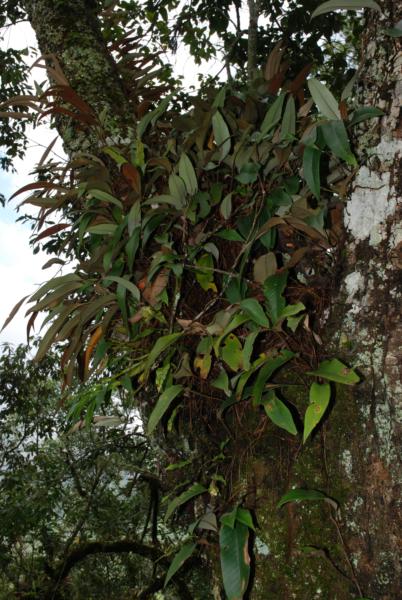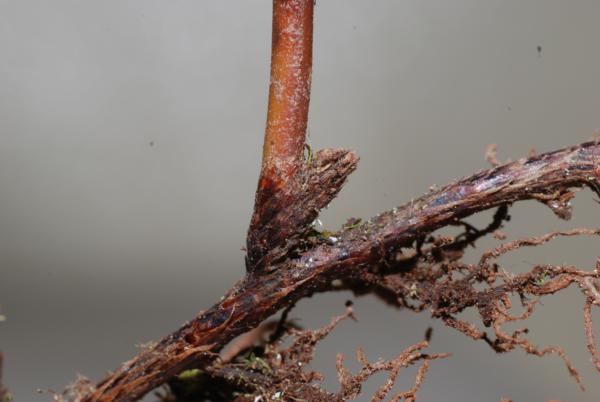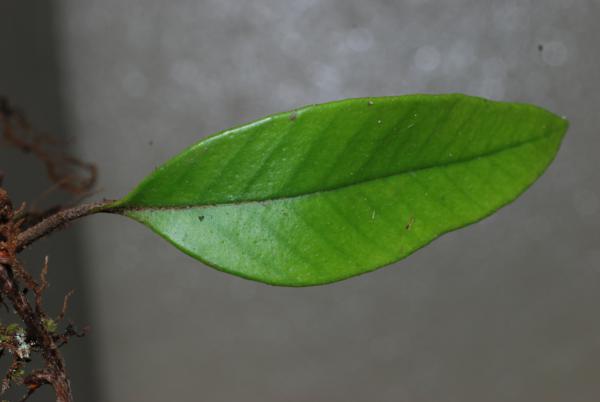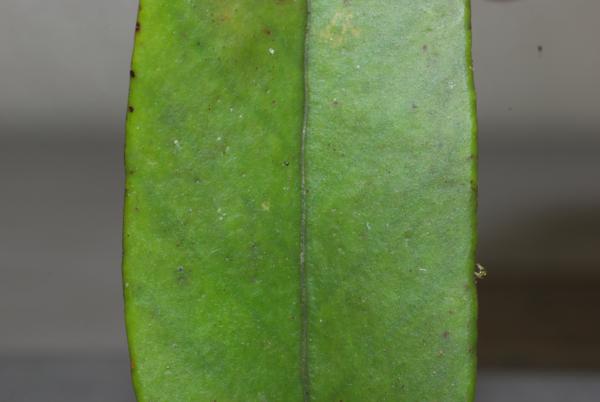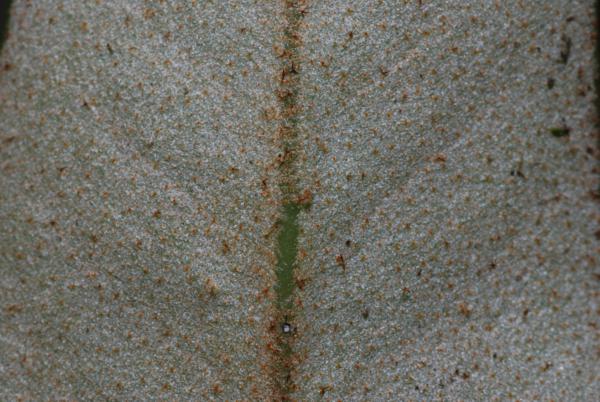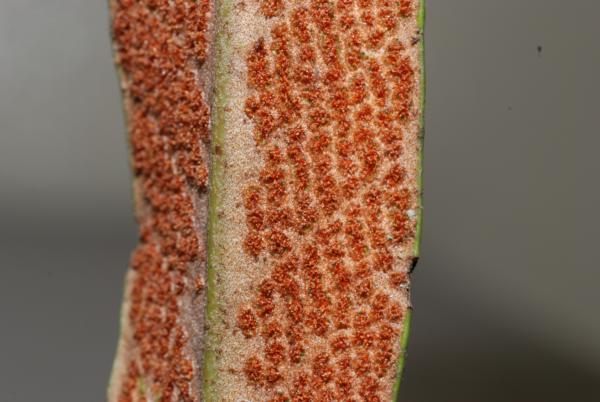
Pyrrosia lingua (Thunb.) Farw. var. lingua
Family
Polypodiaceae
Nomenclature
Pyrrosia lingua (Thunb.) Farw., Amer. Midl. Naturalist 12: 302. 1931; Tardieu & C.Chr., Fl. Indo-Chine 7(2): 508. 1941; Hovenkamp, Leiden Bot. Ser. 9: 203. 1986; Boonkerd & Pollawatn, Pterid. Thailand: 286. 2000; Newman et al., Checkl. Vasc. Fl. Lao PDR: 30. 2007. – Acrostichum lingua Thunb., Fl. Jap.: 330. 1784. – Polypodium lingua (Thunb.) Sw., Syn. Fil.: 29. 1806. – Nipholobus lingua (Thunb.) Spreng., Syst. Veg. 4: 45. 1827. – Polycampium lingua (Thunb.) C.Presl, Epimel. Bot.: 136. 1851.
Description
Rhizome long creeping; scales with marginal cilia. Fronds simple. Stipes 1.5–25 cm long. Laminae oblong-lanceolate, oblong, ovate or elliptic, apex obtuse to acuminate, base cuneate, 5–23 by 1.2–2.5 cm, coriaceous, the margin of fronds often involute, fertile fronds hardly different; midrib and main veins distinct, raised beneath, other veins hardly visible, anastomosing; rigidly coriaceous, upper surface stellate hairy or glabrescent, with scattered hydathodes, the lower surface densely covered with stellate hairs, light to greyish brown. Sori round, distinct, scattered on all the lower surface or in upper part of it, embedded in stellate hairs, not confluent .
Distribution in Thailand
NORTHERN: Chiang Mai, Chiang Rai.
Distribution in Laos
Khammouane.
Wider Distribution
NE India, China, Japan, Korea, Indochina.
Ecology
Epiphytic on tree trunks.
Proposed IUCN Conservation Assessment
Least Concern (LC). This species is widespread and not under any known threat.
Voucher specimens - Thailand
Middleton et al. 5013, Chiang Mai, Doi Chiang Dao Wildlife Sanctuary (E).
Habit
Rhizome and stipe base
Frond
Upper surface of frond
Lower surface of frond
Old sori
Site hosted by the Royal Botanic Garden Edinburgh. Content managed by Stuart Lindsay, Gardens by the Bay, Singapore and David Middleton, Singapore Botanic Gardens. Last updated 24 January 2012
